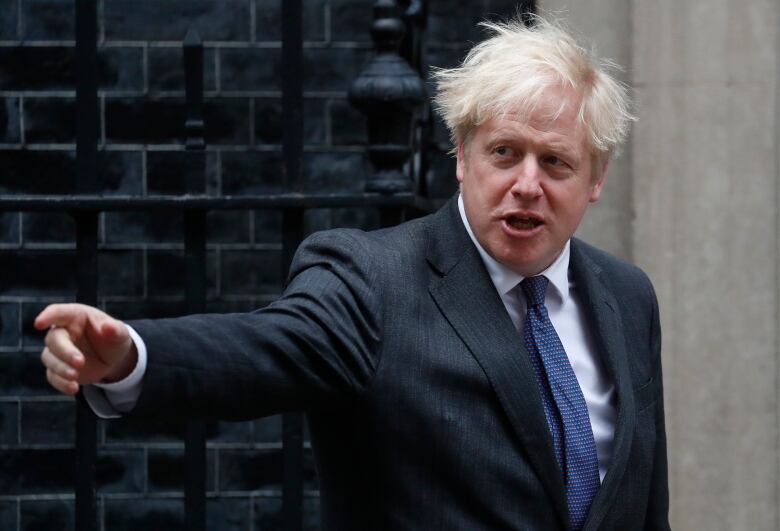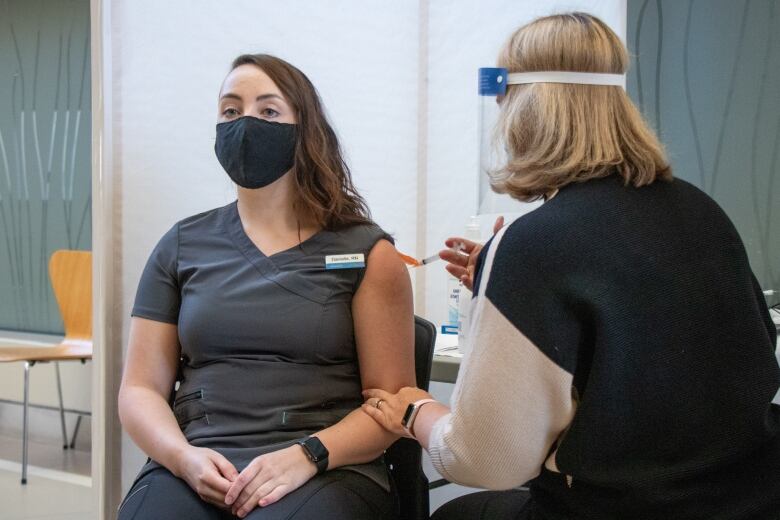Even in a global crisis, Justin Trudeau seems determined to do everything at once
Most minority governments dial back their ambitions. Not this one, apparently.

It seems like a long time ago now, but back in December 2019, Justin Trudeau was a bruised prime minister who had just been given a second chance. The big question was what he would do with it.
Then a global pandemic happened.
COVID-19made for a different kind of year one that might have reset the public's image of Trudeau. Now itsets up what promises to bea pivotal year both for Trudeau's own political project andfor a wide swath of public policy in Canada.
In the wake of the2019 campaign, Trudeau did not tear everything down and start again. But its outcomedoes seem to have caused him to reflect.In his first four years in governmenthe'd been very front and centre and not always in ways that showed a government taking action or achieving results. Going forward, Trudeau wanted Canadians to see him getting things done.
Talking a good game
"The visuals, or the role that I took on in leading this government, sometimes interfered with our ability to actually talk about the really substantive things we were able to get done," Trudeau said in an interview with the Canadian Press in December 2019.
The government did fine when it came toexpressing the rightvalues, Trudeau said, but fell short on showingCanadians what it hadactually done.
The Liberal government that took office in 2015 did manage some accomplishments in its first four years,and at least got a start on various other things. But that first term was defined more often than notby images and wordsratherthan deeds. The government's actions struggled to keep up with the high principles and ideals itso loudly advertised. And not all of the images were flattering.
Apart froma cabinet shuffle highlighted by Chrystia Freeland's elevation to deputy prime minister and a throne speech that leaned heavily on the challenge of climate change, the final weeks of 2019 passed quietly. Trudeau went on vacation with his family. He grew a beard.

Then things started happening quickly. The Iranian military shot down Ukraine International Airlines Flight PS752, killing138 people with ties to Canada. RCMP officers broke up a blockade that was preventing the construction of a natural gas pipeline through Wet'suwet'en territory in British Columbia.
In response, protesters blocked major railway lines in Ontario and Quebec. Trudeau appealed for patience and calm. Andrew Scheer, still hanging on as Conservative leader, said Trudeau had offered the "weakest response to a national crisis in Canadian history."
And then that pandemic happened.
However much Trudeau may have intended onceto cede some of the spotlight, COVID-19 made him more front-and-centre than ever. Between March 13 and June 19, Trudeau appeared before television cameras 78 times, almost always in front of Rideau Cottage, his official residence.
The setting was initially both a necessity and a novelty Sophie Grgoire Trudeau tested positive for COVID-19 and the family was forced to self-isolate and then it became part of a daily routine. Each morning, during days ofunprecedented tumult, Trudeau spoke to Canadians and took questions from reporters.
Whatever he'd shown Canadians before, the pandemic pushed him to the foreasa national leader in the middle of a globalemergency. Standing behind a lectern, he tried to reassure and cajole. He called for unity and reminded everyone to wash their hands. But his words including that promise to "have Canadians' backs" had to be reinforced by immediate and tangible action.
Deeds over words
This was a crisis that required communication and leadership. It also required the government to do things procuremedical equipment, deliveraid to households and businesses, mobilizeindustry, closethe border, dispatchthe military. However imperfect that response was in hindsight, the spring is likely to be remembered as one of the most frenetic periods of action in the history of Canada's nationalgovernment.
Shortly before the pandemic took hold, 47 per cent of Canadians had a negative view of Trudeau and 32 per cent held a positive one, according to a survey conducted by Abacus Data. That dim view of the prime minister had held steady since the spring of 2019, when the SNC-Lavalin affair exploded.
With the pandemic's arrival, public sentiment flipped. In May, 47 per cent of respondents told Abacus they felt positively about Trudeau, while 31 per cent still viewed him negatively.
You can attribute Trudeau's recovery in the polls tothe "rally round the flag" effect (or maybe Canadians just really grew to like the beard). But a surge in support for a government leader during a crisis isneitherguaranteed(ask Donald Trump) nornecessarily built to last(ask Boris Johnson).

Months later, Trudeau's approval ratings have not reverted to pre-pandemic levels. In late November, Abacus reported a score of 42 per cent positive against 34 per cent negative for the prime minister.
It may be no coincidence that Trudeau's personal ratings improved just as his government was takingdirect and immediate action against the pandemic. There was no time to be flashy or ostentatious. Promises had to be met quickly. It wasn'talways elegant or tidy, but the scale of the action was obvious.
And Trudeau's numbers likely wouldbe even better nowif he hadn't walkedconfidently into another wholly unnecessary ethics scandalthis time overhis government's decisionto partner with the WE charity to deliver a youth service program. Some old habits die hard.
In the midst of that messy summer, Liberals also began to publicly entertain the notion of an ambitious post-pandemic agenda. But if the government's thoughts were once again in danger of floating too far away, the pandemic's second wave brought things back to the inescapable present. By November 20, Trudeau was back in front of Rideau Cottage.

The fall of 2020 otherwise saw a government trying to keep up with expectations, some of which it had created for itself. With the opposition howling impatiently and pundits circling, the first shipments of a COVID-19 vaccine arrived.
The Liberals released a plan to meet Canada's 2030 emissions target and tabled legislation to implement the United Nations Declaration on the Rights of Indigenous Peoples. But they also had to concede that they would not meet their goal of bringing safe drinking water to every Indigenous community in the country by next spring.
Some of those things might end being legacy items. But there is now only more to do either because of necessity or because of the government's own stated ambitions.
The pandemic continues, now with the hope that all Canadians will be vaccinated by September. There is an economy to repair and the Liberals say they are willing to spend as much as $100 billion to do so.
The throne speech in September laid out a post-COVID agenda that would have the federal government expandaccess to child care, reformemployment insurance, advancepharmacare, negotiatenew national standards for long-term care, investin new training for workers, combatsystemic racism, builda clean economy, increaseimmigration and further the cause of Indigenousreconciliation and do it allin a fiscally sustainable way.
The Liberals are making their arguments about what should be considered important now. But their agendaalso seems like the culmination of the broad ideas and goals they laid out five years ago when they proposed that an activist government should focus on growing and supporting the middle class, promoting diversity, fighting climate change and advancing reconciliation. The Conservatives argue thatthe Liberals have been going about thosethings all wrong.The NDP argues they're not going far enough or fast enough.
The question for Trudeau is how much of it his governmentcan get done before the next election. With the support of the New Democrats (or the Bloc Qubcois, or even some Conservatives), he could carry on doing these thingsforanother three years before going to the polls. With no small amount of effort (and some luck), he could have this agenda mostly in place before the next election.
Or he could wager in the spring or maybe the fall that taking his case to the voters would result in the sort of majority that would give his Liberals another four years to fully implement an agenda without the posturing and constant negotiation of a minority Parliament.
As always with this government, much will depend on Trudeau and the Liberalsnot getting in their own way, regardless of the path they choose.
A different kind of year has left Justin Trudeau in a different place. But the basic challenge getting things done in difficult times hasn't really changed.












_(720p).jpg)


 OFFICIAL HD MUSIC VIDEO.jpg)
.jpg)



























































































